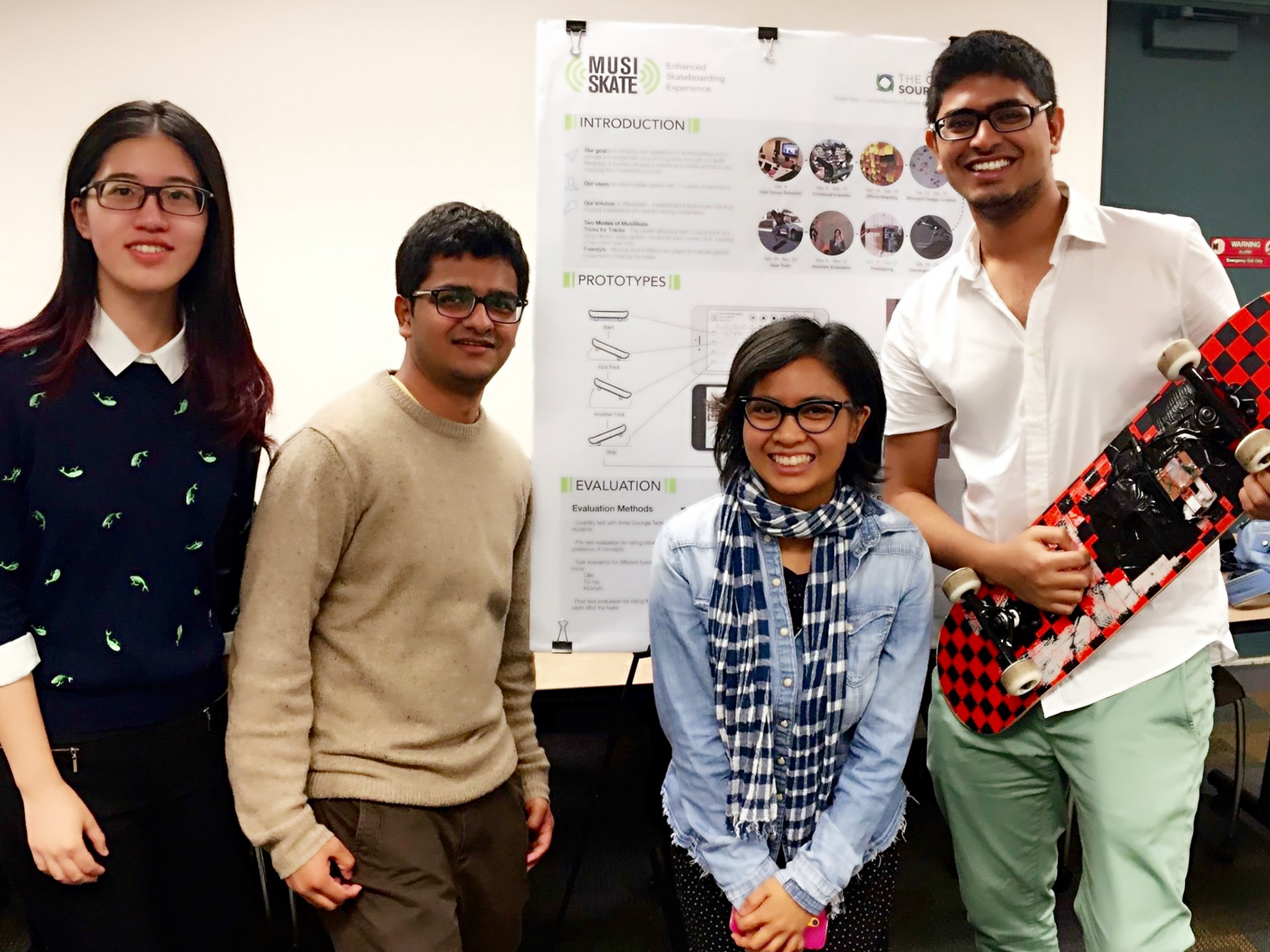Musiskate
Enhanced skateboarding experience with music
Enhanced skateboarding experience with music
MusiSkate is a system that provides rich musical feedback to skateboarding movements and tricks without requiring any extra intentional interaction from the user. We aim to provide a technological solution that can be accepted as an integral part of the sport; a solution that can enhance the experience of skateboarding by encouraging skateboarders to keep at it, to be creative and competitive as well.
The project was presented at the Mobile HCI Conference 2016.
Learning to skateboard is highly a experiential process: it is primarily facilitated through trial-and-error, repetition, “feel” (e.g., experiencing the equipment) and watching others (e.g., via YouTube, in person). However this process can be extremely time taking for some and even discouraging. Hence it is useful to think of ways to augment the skateboarding experience that can both encourage users to keep at it!
The system presents a series of tricks the skater must perform and unlocks a new musical track of a song for each correct movement.

Musical sound effects are played to indicate specific movements made by the skater (e.g., ollie, tic-tac).

Skateboarding is a unique sport such that it can defined as both a “social” and “loner” sport. It is social in the sense that groups of people can be seen to be skating together, and it is a loner sport because skaters dedicatedly practice tricks alone, and there are hardly ever any teams, coaches, officials or strict rules. Such a realization, added to our perceived “coolness” of the inherent showmanship of the activity directed us to look further into the highly physical culture of skateboarding.
To give ourselves us a background on skateboarding including the jargon and skills required and as a sort of ice-breaking we watched a few videos on Youtube and wrote about our observations.
We visited prime skateboarder areas and observed the skaters in their natural environment to understand their process.We conducted semi-structured interviews in two well-known skateparks in and around Atlanta:
We also visited Stratosphere Skateboards, a popular skate shop to get a feel of what the skateboarders buy and what sort of gears they like.
We conducted semi-structured interviews as a part of the background research. We interviewed 8 representative skaters from our target population at the two skate-parks we visited with skill levels ranging from “beginner” to “expert”. Apart from the skateboarders, we also interviewed three non-skateboarders who had expert knowledge in the domain.
We assigned roles for the different tasks that can be carried out and took turns in playing the various roles so that everyone could get experience with all the roles. We also prepared a discussion guide before interviewing users. We also used a pre-interview survey to get information about users’ demographic data and level of experience.
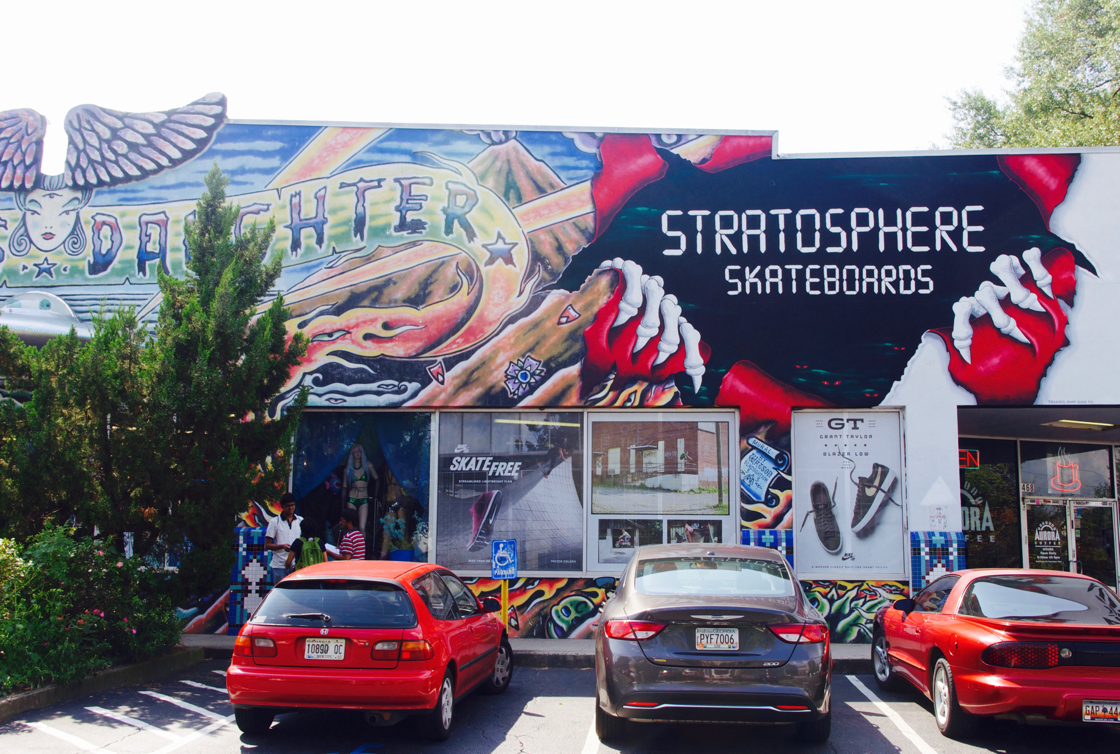
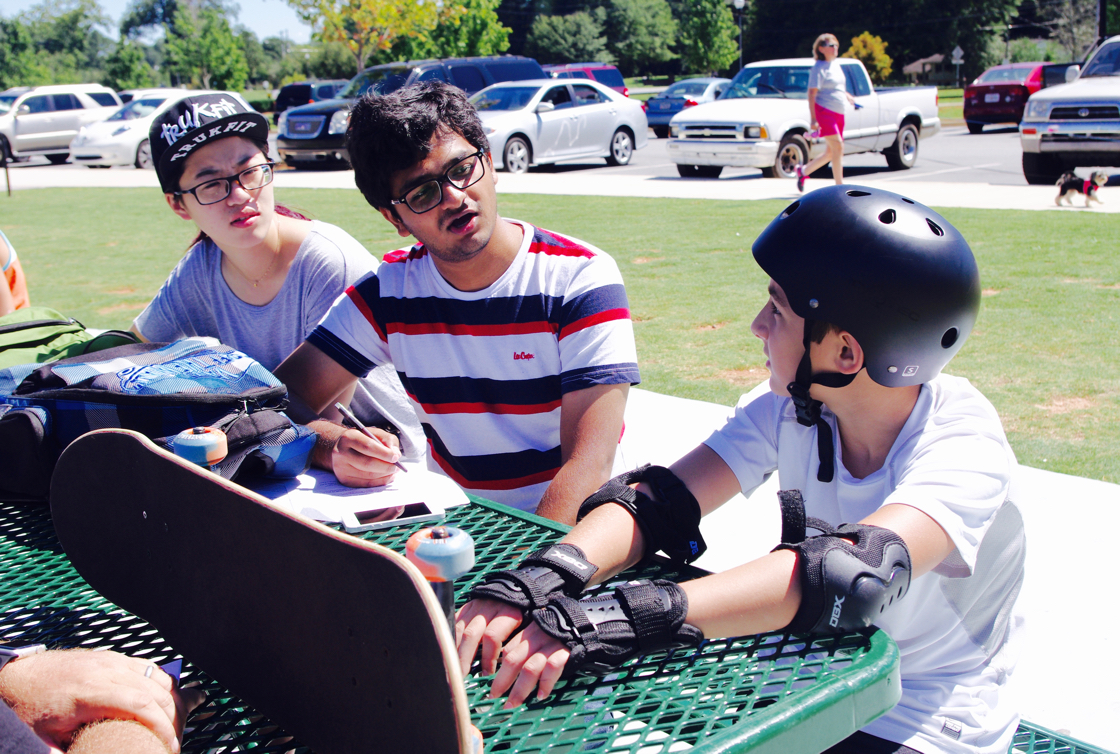
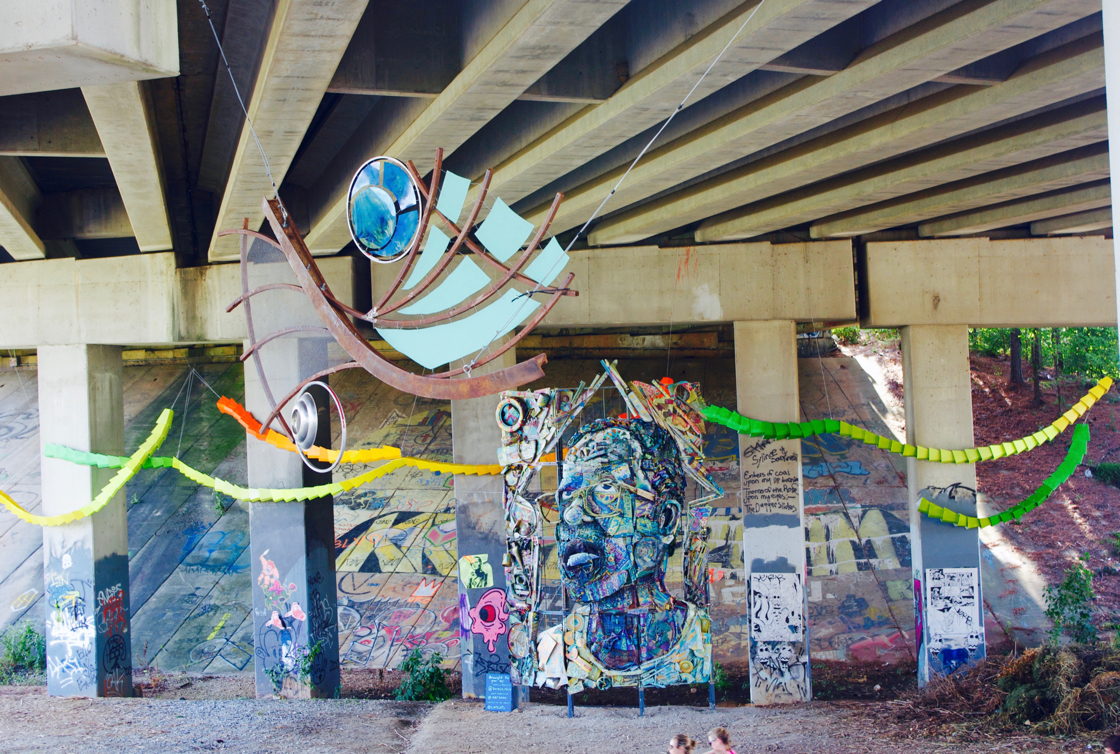
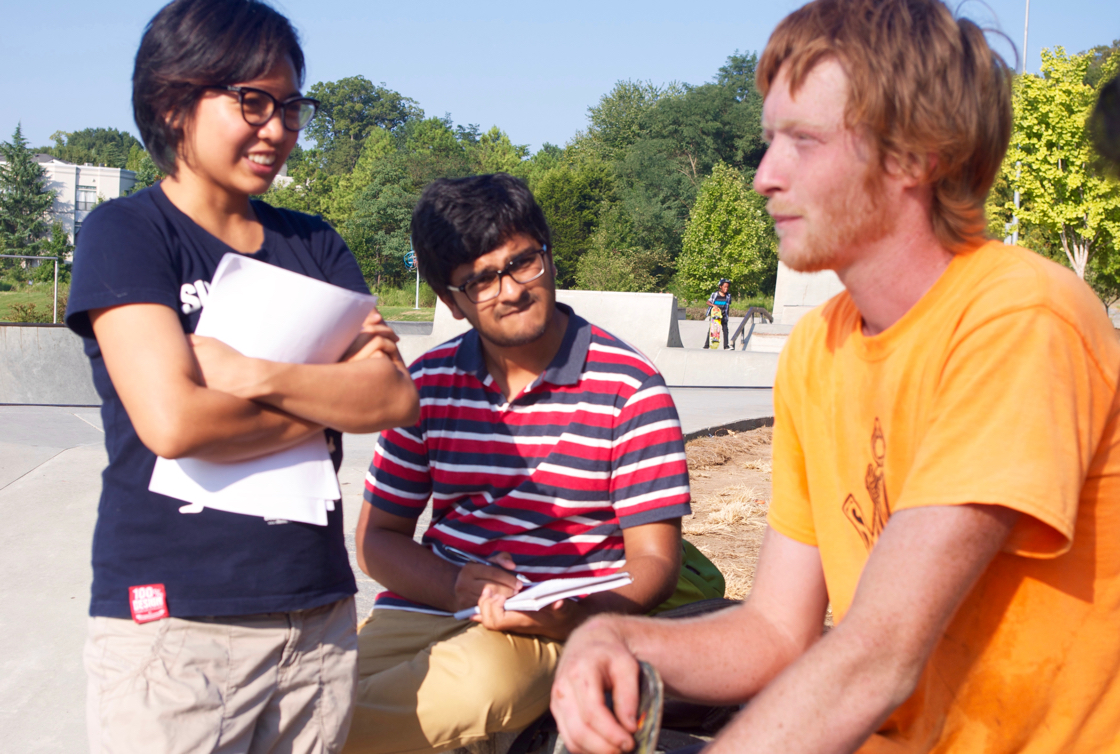
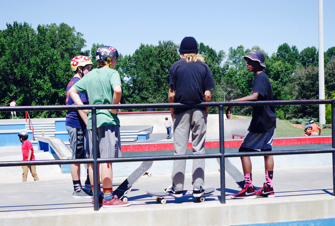
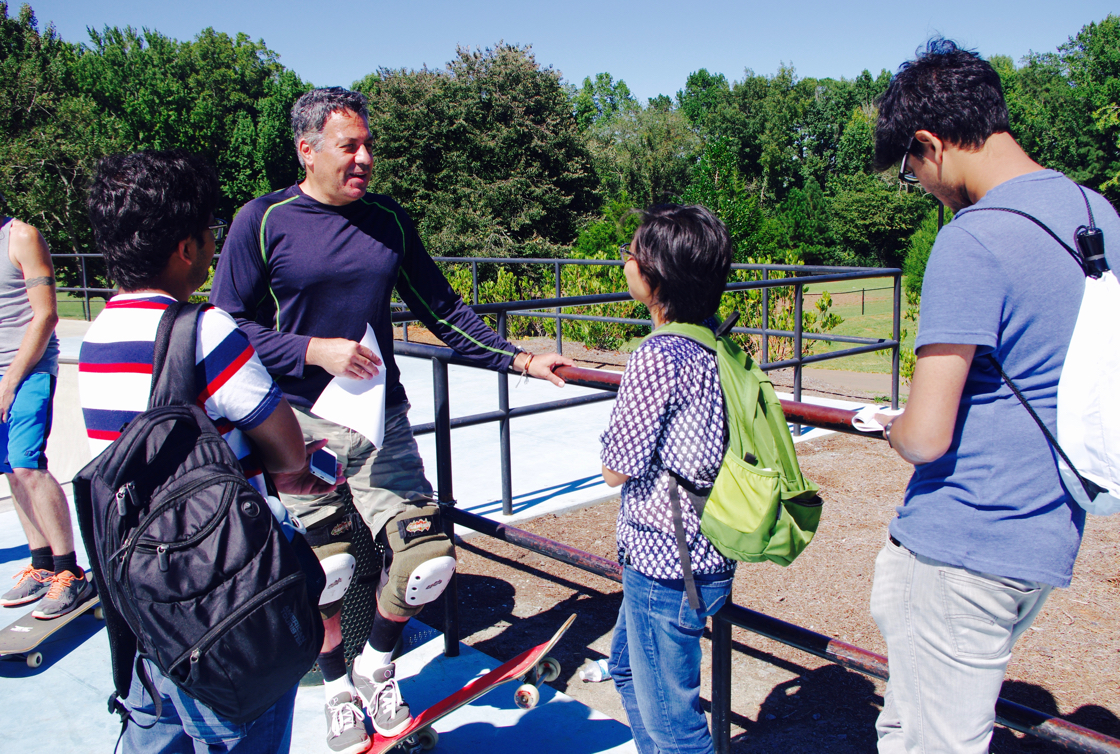
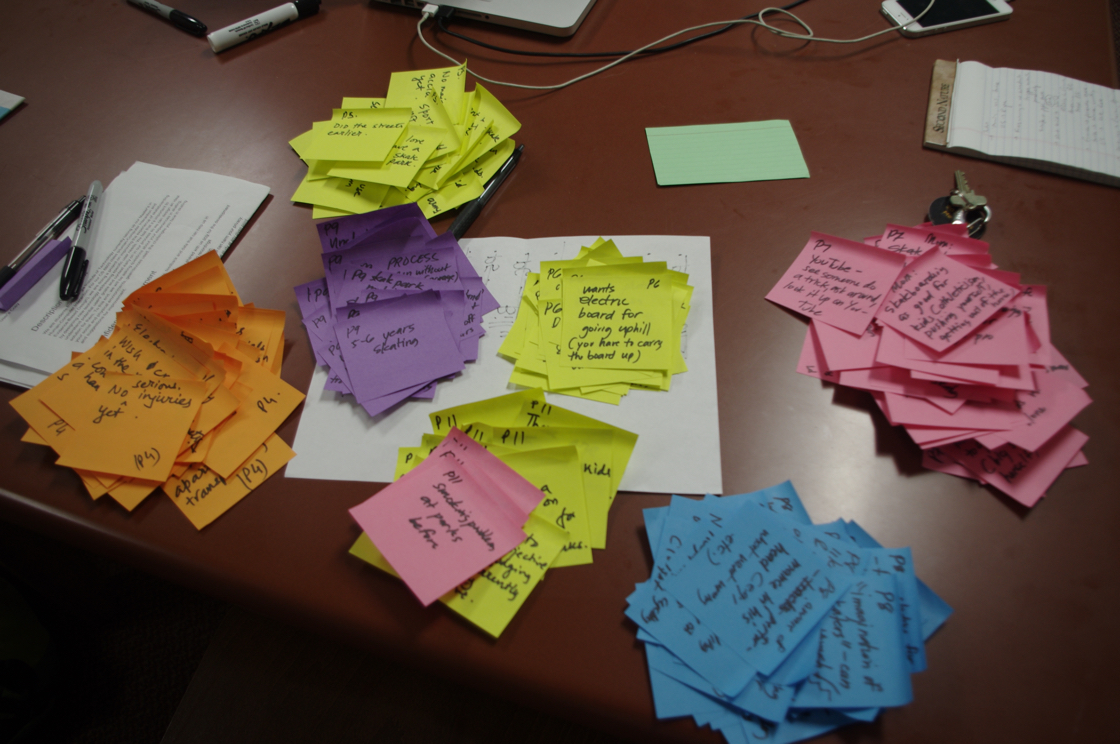
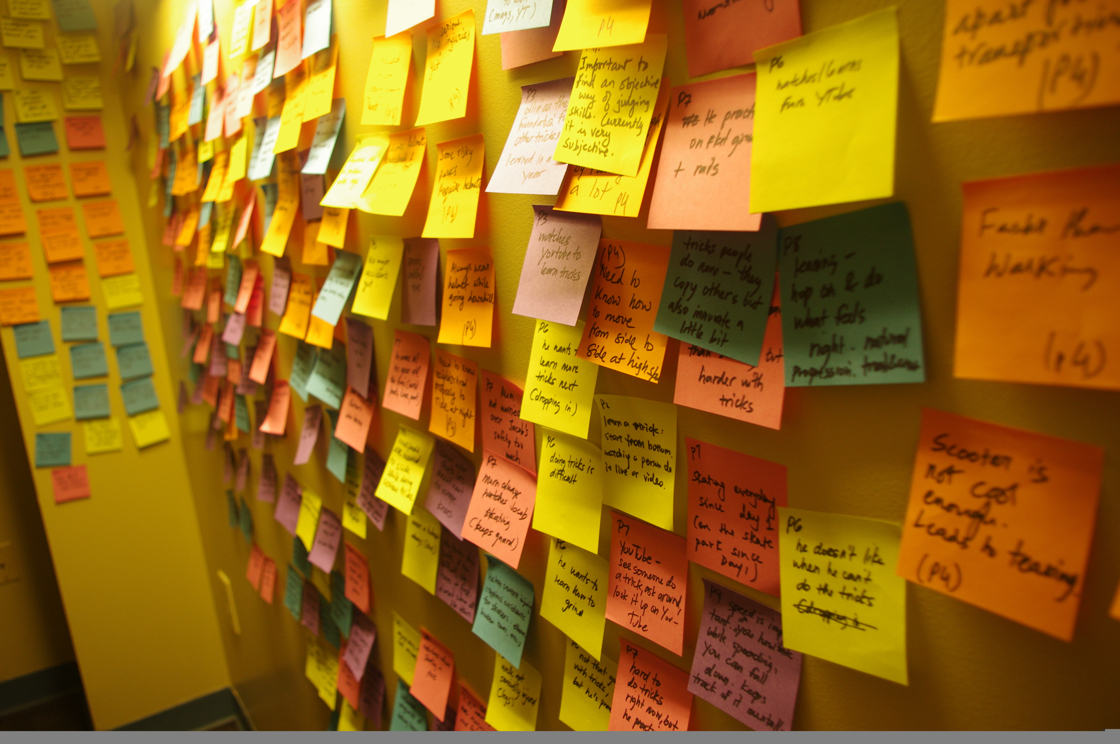
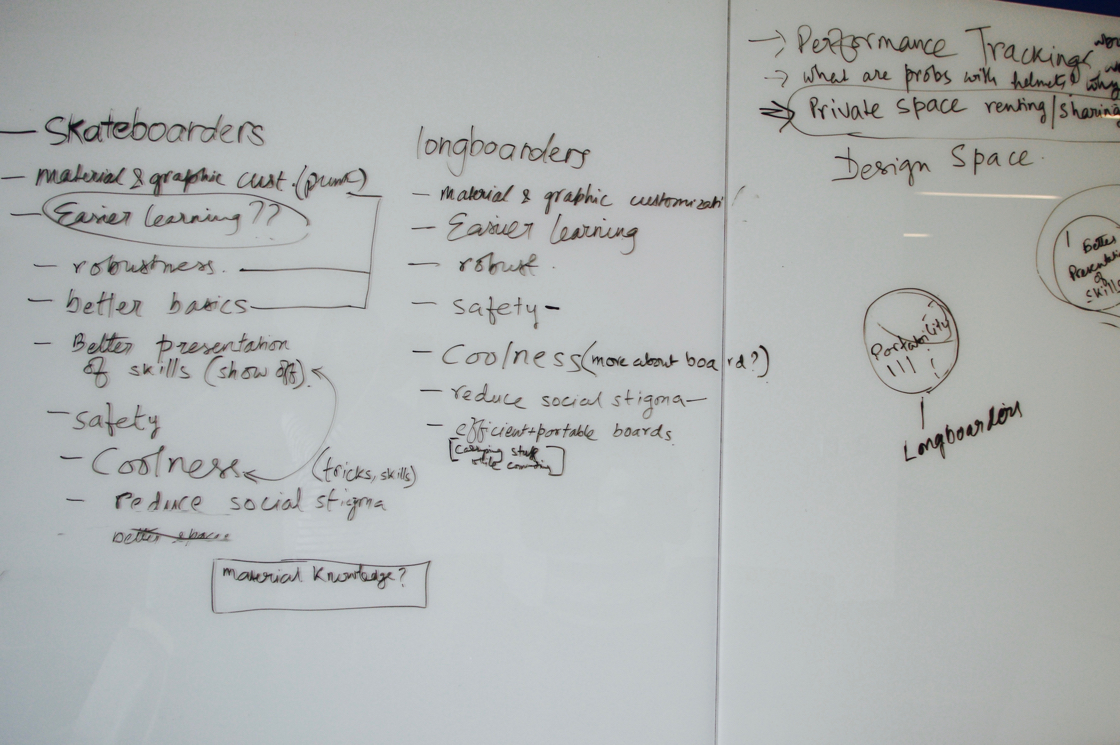
We also create a model of skateboarding learning process, the process of learning tricks can be segmented into three phases.
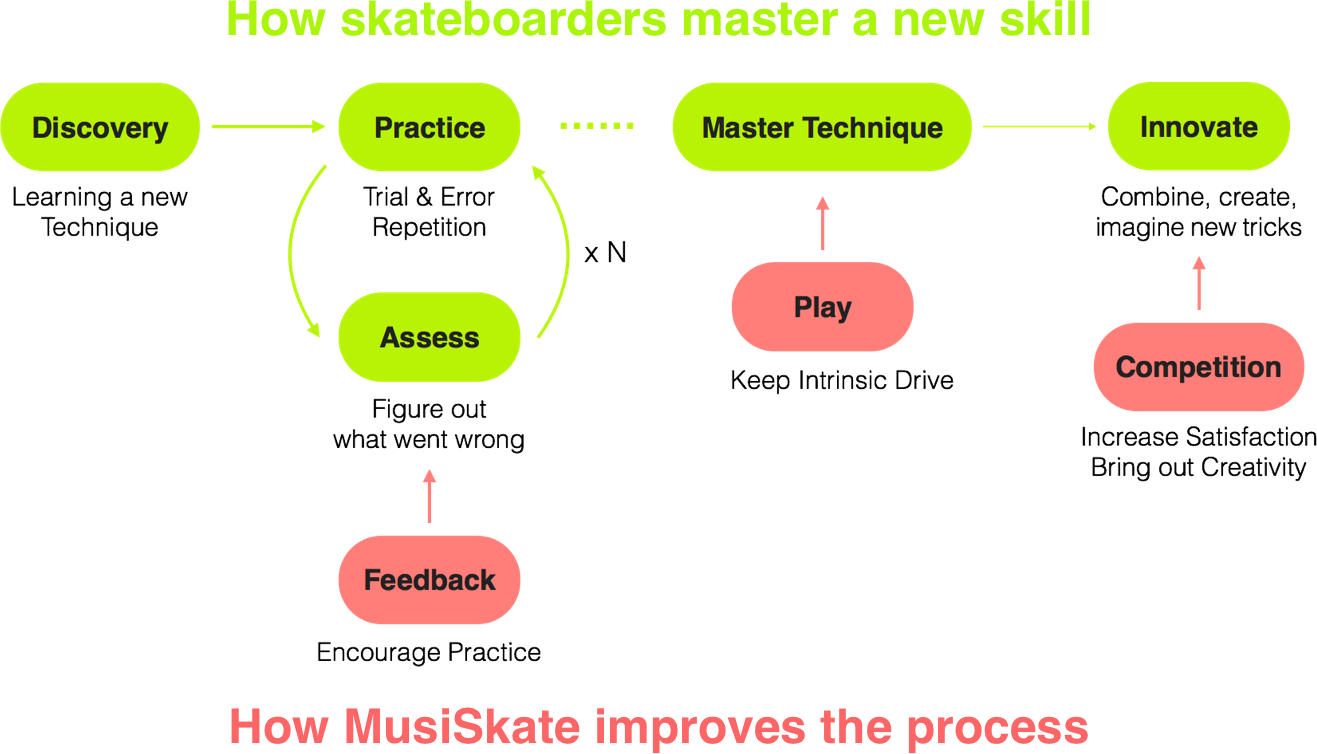
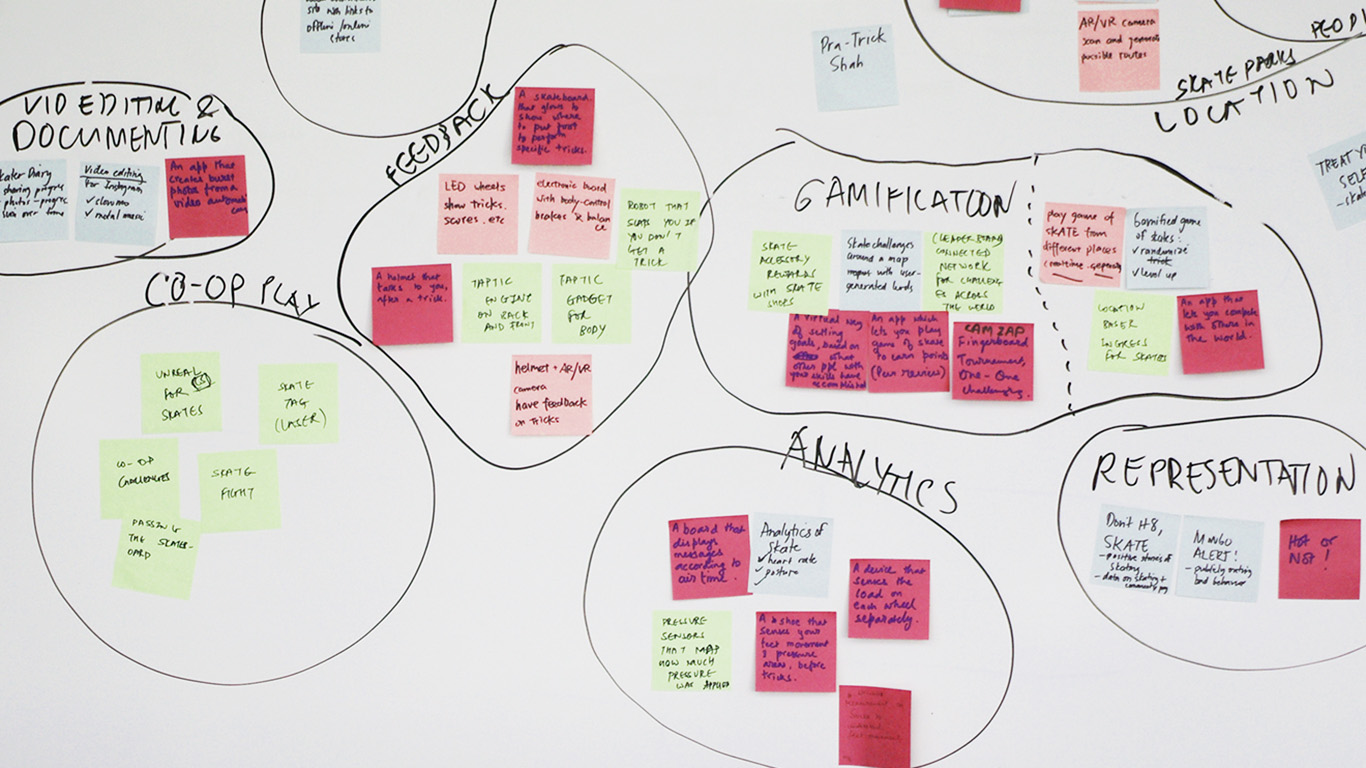
In the end, we selected the third direction based on our common interest in music, feasibility of our concept for the duration of the course, and our professors’ and classmates’ feedback at a poster session.
Storyboard of Final Design Concept
We decided to split our concept into two devices so we can save time. As a low-fidelity proof of concept within our team, I designed a Wizard of Oz prototype to propose the possible user interaction and audio tracks. I designed the task workflows for both prototypes.
The problem I solved first was how to design the user workflow for builder
We conducted a heuristic evaluation session with another team from our class. The purpose of this is to internally evaluate our system for major usability issues before presenting it to the user for testing.
Both of the prototypes were tested by each participant. The participants were then allowed to freely explore the audio feedback system. We then had a semi-structured feedback session to elicit the positive and negative points of the system, their thoughts about the feedback and music. The participants then proceeded to a different prototype or recorded their thoughts in the evaluation sheets.
We conducted a usability testing of our prototypes with three participants that we recruited.As undergraduate students, their age ranges all fell under 18-24. Two of them have 1-5 years of skateboarding experience, while one person has 6-10 years. All of them describe themselves as “intermediate” skaters. The purpose is to determine whether the prototype work with its intended users and to improve our design.
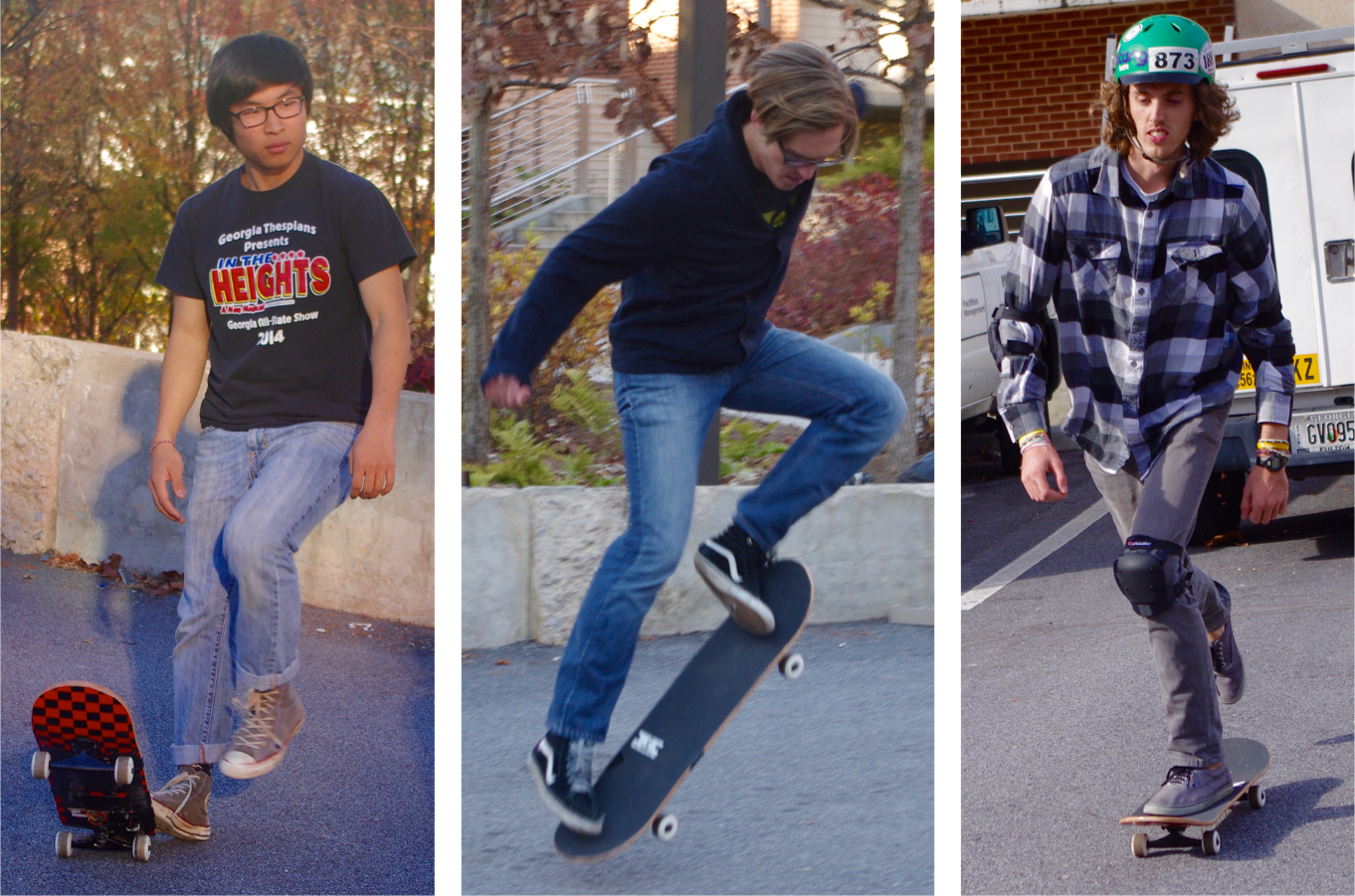
Results
In general, the ratings for Freestyle remained constant for the pre-test and post-test questionnaires, implying that it met the users’ expectations of the system. One thing to note is it did not meet the threshold of 4 for usefulness, which shows that it was perceived to be more entertaining than useful.This can be due to the fact that the Freestyle interaction does not utilize a rewarding methodology but concentrates more on bringing out the creative side of the skater. This creative aspect will become more prominent when a larger number of tricks and movements can be mapped to widely varying sound-effects and also when the user gets the choice of choosing his/her own music track. For Tricks for Tracks, the usefulness and future use increased (median = 4) and decreased in appropriateness (median = 4), which can mean the users felt it exceeded their expectations but the music must be more customizable for their own purposes. Overall, the prototypes met our threshold of acceptance of 4-5 on the Likert Scale.

Major Issues Revealed
Positive Takeaways
Despite the design issues, the system received an overall positive response from all the participants. They confirmed the fact that many skaters like to listen to music while skating and using the skateboard itself to generate sound and control music was perceived as a really “cool” and motivational idea. All the participants felt eager to try out the product in future and felt that audio feedback is highly suitable for skateboarding in general. Our design includes two different modes of interaction Freestyle and Tricks for Tracks, and both the modes of interaction seemed to address different aspects of the skateboarding experience- Freestyle can be used in earlier stages of skateboarding when skaters need to practice the same trick repeatedly whereas Tricks for Tracks can be useful once they have gained mastery over a set of tricks. Moreover while Freestyle was perceived as more fun and creative, Tricks for Tracks was perceived as more rewarding and useful. Tricks for Tracks surprised the users in terms of satisfaction as is seen from the differences in the pre and post questionnaire results. Freestyle on the other hand remained more or less constant and kept up to the expectations of the users as expressed in the pre-test questionnaire.
With our MusiSkate prototype, we have demonstrated how audio feedback can play a part in enhancing the experience of skateboarding and potentially being useful in long-term learning of tricks. These findings suggest applications in other trick-based sports. Future iterations will include a combination the two prototypes, finer trick detection algorithms, increasing the complexity of the reward structure and customization of musical and skateboard preferences.
